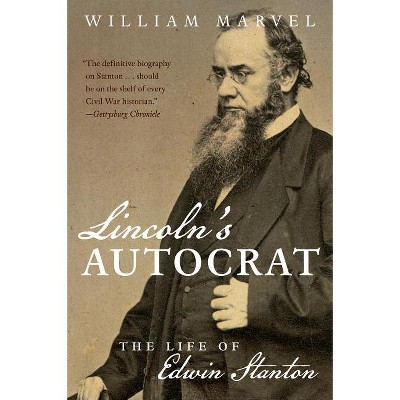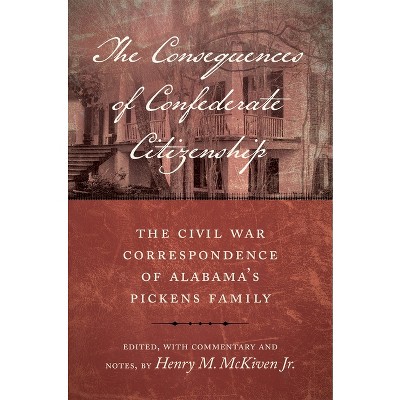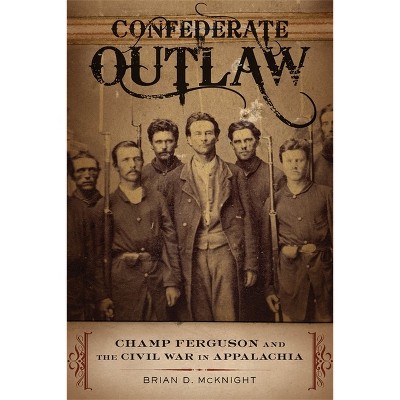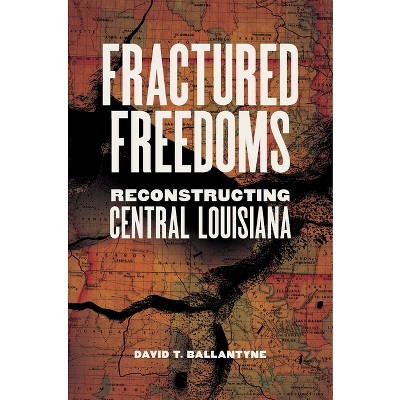Sponsored

The Confederate Resurgence of 1864 - (Conflicting Worlds: New Dimensions of the American Civil War) by William Marvel (Hardcover)
In Stock
Sponsored
About this item
Highlights
- William Marvel's The Confederate Resurgence of 1864 examines a dozen understudied Confederate and Union military operations carried out during the winter and spring of 1864 that, taken cumulatively, greatly revived white southerners' hopes for independence.
- About the Author: William Marvel is the author of twenty books on the American Civil War, including Lincoln's Mercenaries: Economic Motivation among Union Soldiers during the Civil War.
- 344 Pages
- History, United States
- Series Name: Conflicting Worlds: New Dimensions of the American Civil War
Description
About the Book
"William Marvel's "Rebel Resurrection" examines a dozen mostly small and largely understudied Confederate and Union military operations in early 1864 that, when combined, represented a unique and unbroken string of successes for the demoralized Confederacy. Dejection and despair were the prevailing sentiments as 1863 ended, with the Confederate nation cut in two, Tennessee lost completely, Braxton Bragg's army utterly routed at Chattanooga, and even the no-longer-invulnerable Robert E. Lee defeated at Gettysburg. The early 1864 victories gave the Confederacy hope of turning the tide of its misfortunes, giving it the will to fight on in its doomed effort to preserve slavery by seceding from the United States. Surprisingly, the cumulative result of the campaigns has remained virtually unnoticed and until now has never been examined in detail. The operations Marvel examines include William T. Sherman's Meridian campaign; Pickett's failed attack on New Bern; the sinking of the USS Housatonic by the CSS Hunley; the Confederate victory at Olustee, Florida; Nathan Bedford Forrest's defeat of William Sooy Smith's cavalry raid; the repulse of the Union advance on Dalton, Georgia; Ben Butler's botched raid on Richmond; Judson Kilpatrick's equally disastrous reprise of the same effort; the ill-fated Red River campaign; Forrest's raids on Union City, Paducah, and Fort Pillow; the failed Camden expedition into Arkansas; and the capture of Plymouth, North Carolina and its Union garrison. Those real and perceived Confederate successes emanated from Union army operations that ranged between unnecessary and inadvisable, and their principal fruits consisted of a vibrant restoration of Confederate hope and confidence in camp and at home. Overall, Marvel suggests that the operations worked disproportionate magic on all the major armies of the South by the opening of the spring campaigns of 1864, illustrating how abruptly dismal military prospects could be reversed. He contends that without that experience to sustain them, the Confederates who faced Sherman and Grant in the spring and summer of 1864 would inevitably have shown less âelan and ferocity at the outset of those campaigns and would have been more readily susceptible to the demoralization that ultimately led to the collapse of the rebellion. Marvel's study offers a smorgasbord for readers interested in military aspects of the Civil War. In addition, it also explains the remarkable recovery of confidence in the Confederate army and on the home front between the winter and spring of 1864"--Book Synopsis
William Marvel's The Confederate Resurgence of 1864 examines a dozen understudied Confederate and Union military operations carried out during the winter and spring of 1864 that, taken cumulatively, greatly revived white southerners' hopes for independence. Among the pivotal moments during this period were the sinking of the USS Housatonic by the CSS Hunley; Nathan Bedford Forrest's defeat of William Sooy Smith's cavalry raid; and the Confederate army's victory at Olustee, Florida. The repulse of Union advances on Dalton, Georgia; botched Union raids on Richmond; and the capture of the Union garrison in Plymouth, North Carolina, likewise suggested that the tide of fighting had turned toward the Confederate cause. These events boosted the morale of southern troops and citizens, and caused grave concerns about the war effort in the North and in the mind of Abraham Lincoln.
In late 1863 and early 1864, dejection and despair prevailed in the South: Union soldiers had vanquished Robert E. Lee at Gettysburg, the Confederate nation had been cut in two, Tennessee was lost, and Braxton Bragg's army had been utterly routed at Chattanooga. Defeatism loomed in the South during the first weeks of 1864, and the ease with which William T. Sherman rampaged across Mississippi illustrated the dominance of Union forces, while Confederates' ineffectual assault on New Bern accentuated their weakness. Yet between February 20 and April 30, southern troops enjoyed an unbroken string of successes that included turning back a concerted Union offensive during the Red River campaign as well as Forrest's incursions into Union City, Paducah, and Fort Pillow. Aided by flawed strategy implemented by Union army officers, the achievements of Confederate forces restored hope and confidence in camp and on the southern home front. The Confederacy's battlefield successes during the early months of 1864 remained almost unnoticed by Civil War scholars until recently and have never been studied collectively for their impact on Confederate morale. The victories invigorated southern combatants, demonstrating how abruptly the most dismal military prospects could be reversed. Without that experience, Marvel argues, the Confederates who faced Sherman and Grant in the spring of that year would certainly have displayed less ferocity and likely would have succumbed more quickly to the demoralization that ultimately led to the collapse of Confederate resistance.About the Author
William Marvel is the author of twenty books on the American Civil War, including Lincoln's Mercenaries: Economic Motivation among Union Soldiers during the Civil War.Shipping details
Return details
Trending Non-Fiction


















